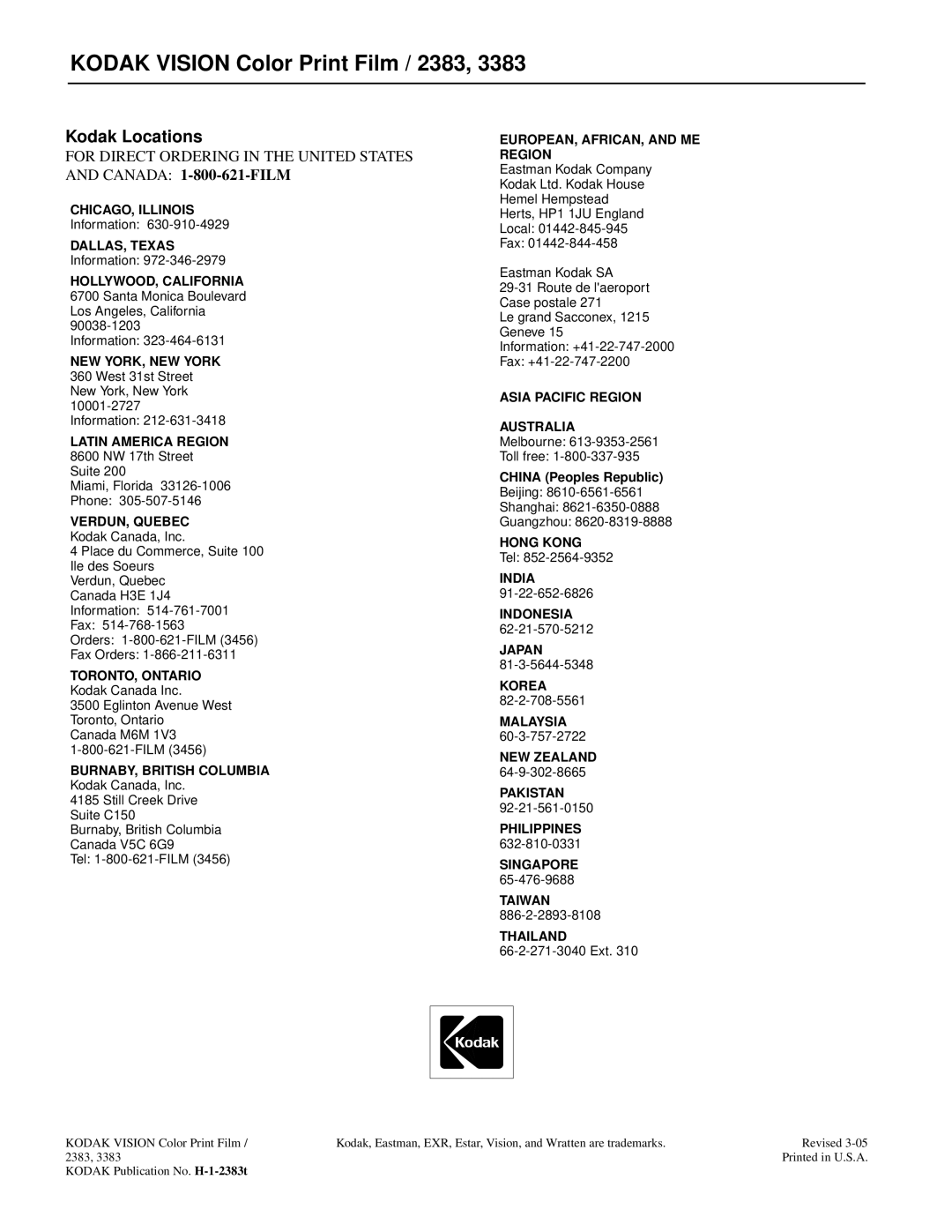3383, 2383 specifications
Kodak 2383 and 3383 are renowned film stocks that have left a significant mark on the world of motion picture cinematography. Widely regarded for their vibrant color reproduction and exceptional image quality, these films have become staples in the industry, trusted by filmmakers for various shooting scenarios.Kodak 2383 film is a color print film designed primarily for motion picture use. It boasts an impressive exposure latitude that enhances its versatility, allowing cinematographers to capture scenes in a broad spectrum of lighting conditions. This film is characterized by its ability to reproduce colors with remarkable fidelity, ensuring that the hues seen through the camera are preserved accurately during the printing process. Kodak 2383 is often used in the final print stage of film production, making it a favorite among professionals.
One of the notable features of Kodak 2383 is its grain structure, which is fine and consistent, contributing to a smooth visual texture. This characteristic is crucial for ensuring that the film can be projected at large sizes without losing clarity and detail. Additionally, it has a moderate dynamic range, allowing for a good balance between highlight and shadow details, making it suitable for a variety of cinematic styles.
Kodak 3383, on the other hand, is optimized for a different aspect of film production. It serves a similar purpose but is regarded more for its capabilities in producing optical effects and special color grades. This film stock is designed to enhance color vibrancy, making it ideal for sequences that demand a more striking visual presentation.
Both films utilize advanced emulsion technology that enhances their overall imaging performance. This includes improved sensitivity to light and color, ensuring that even the most challenging lighting conditions can be captured effectively. Furthermore, these films have been engineered to exhibit consistency across batches, which is vital for maintaining a cohesive look throughout a production.
In conclusion, Kodak 2383 and 3383 offer filmmakers unique attributes that cater to different needs within the film production process. Their combined capabilities in color reproduction, grain structure, and technological advancements make them essential tools for anyone looking to create high-quality, visually compelling moving images. Whether it's for capturing everyday scenes or enhancing dramatic moments, these film stocks continue to play a crucial role in the art of cinematography.

